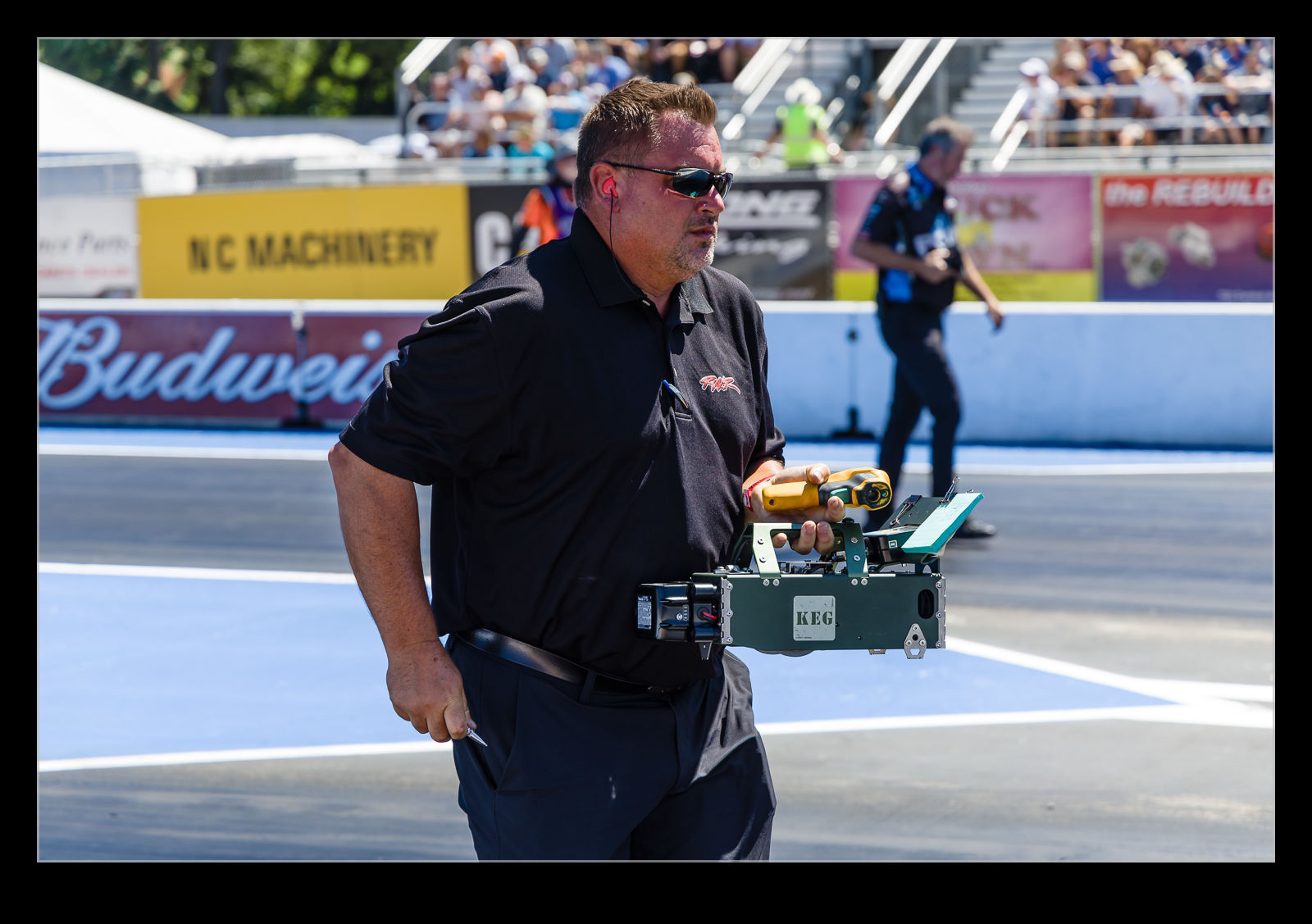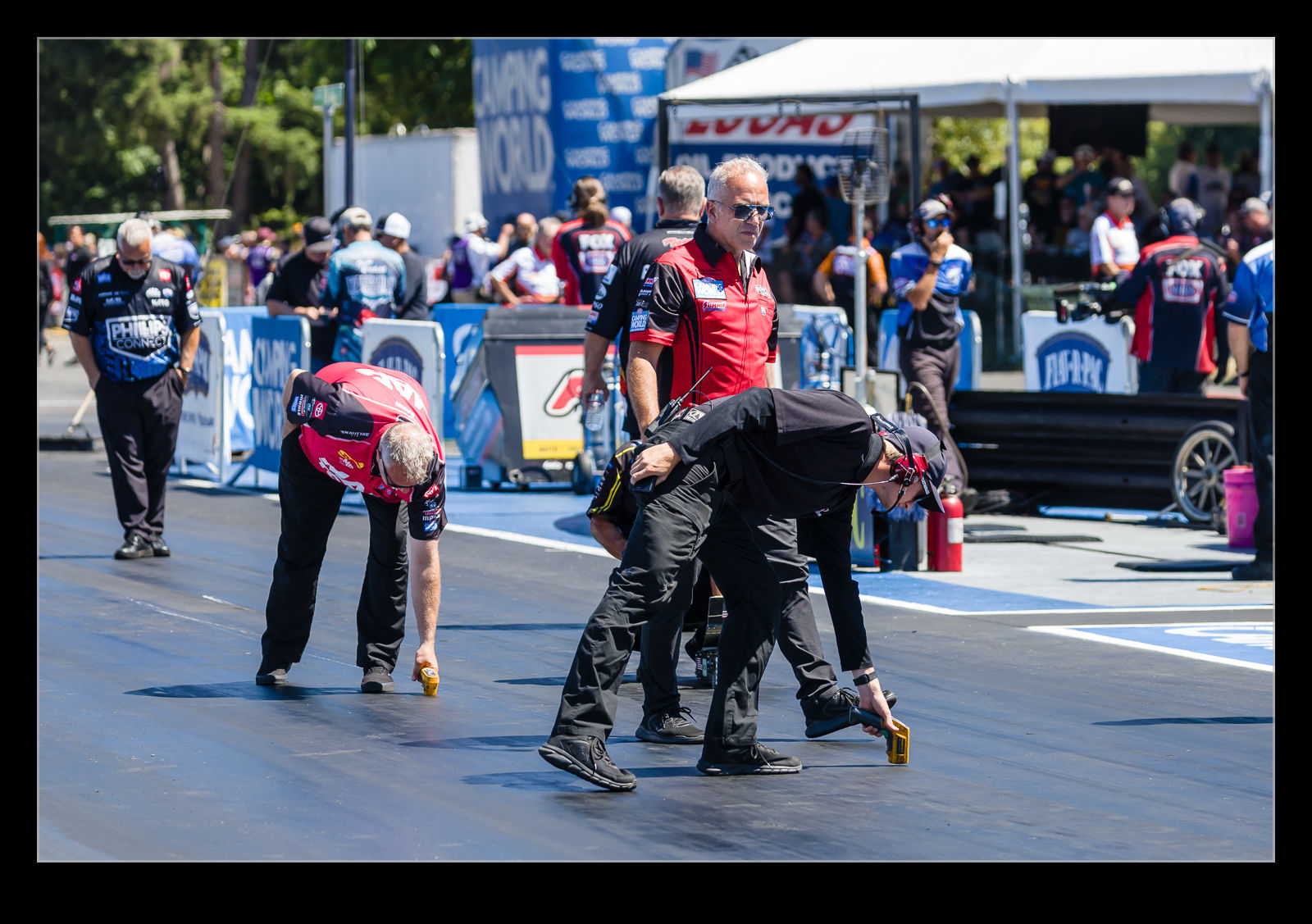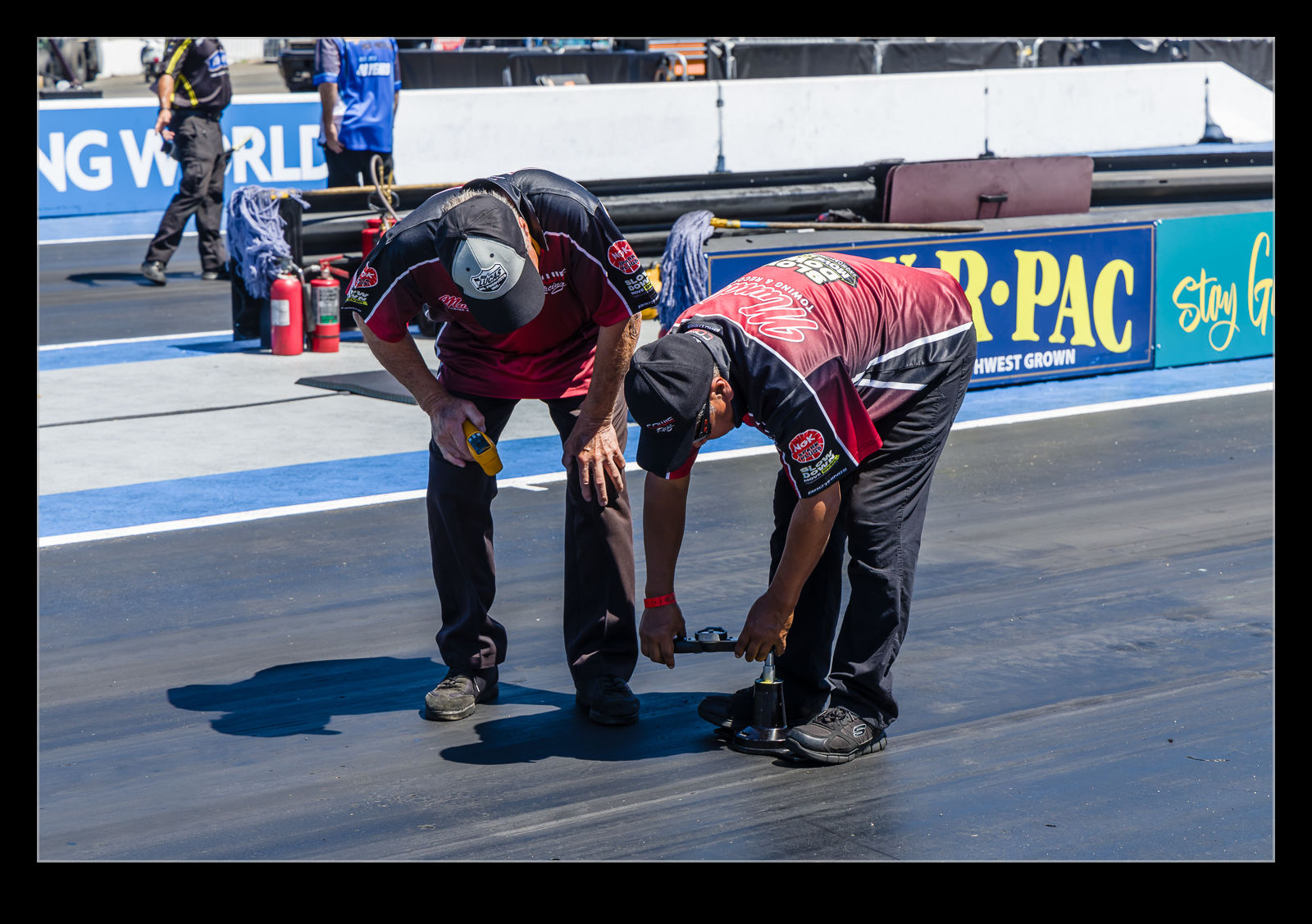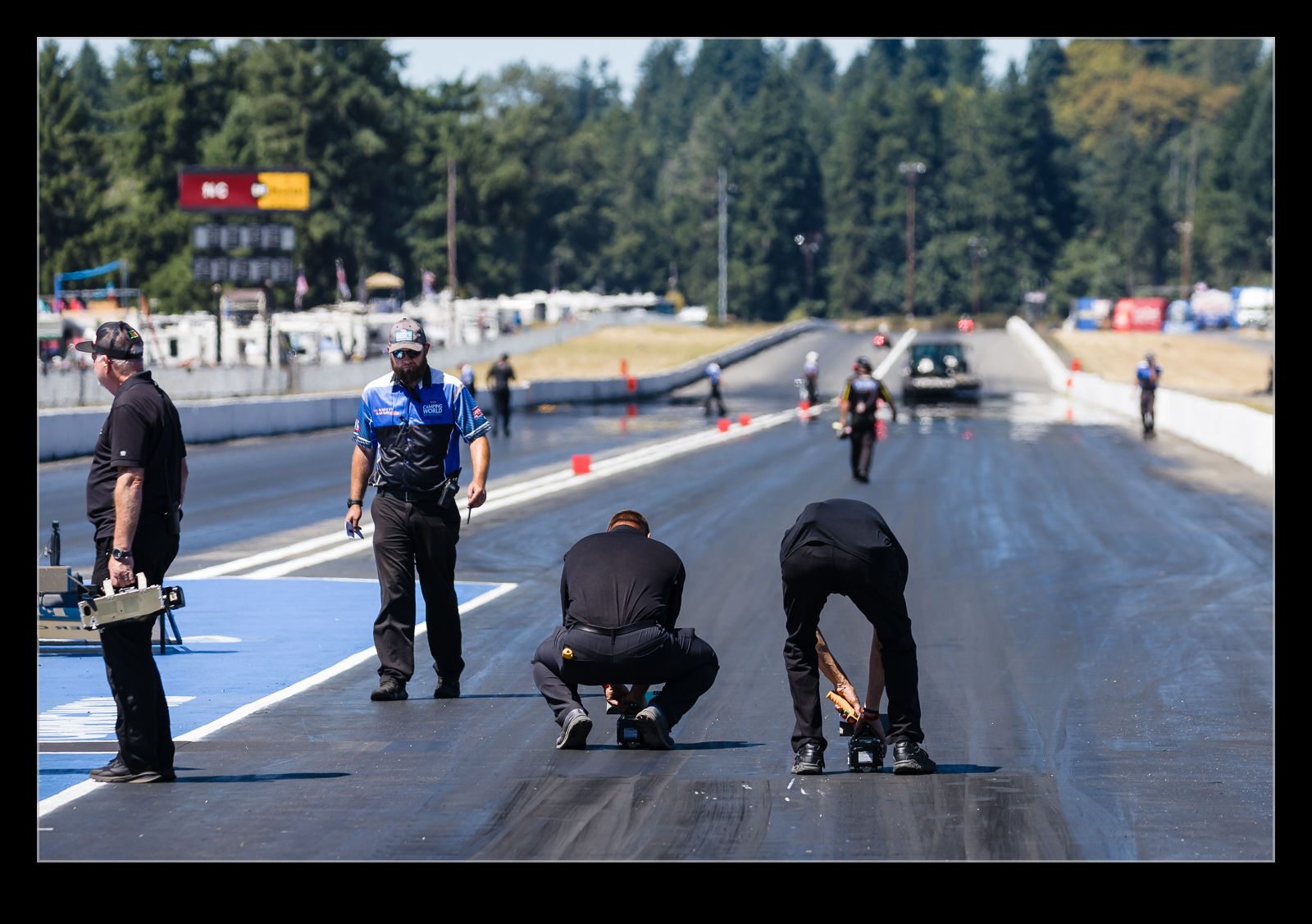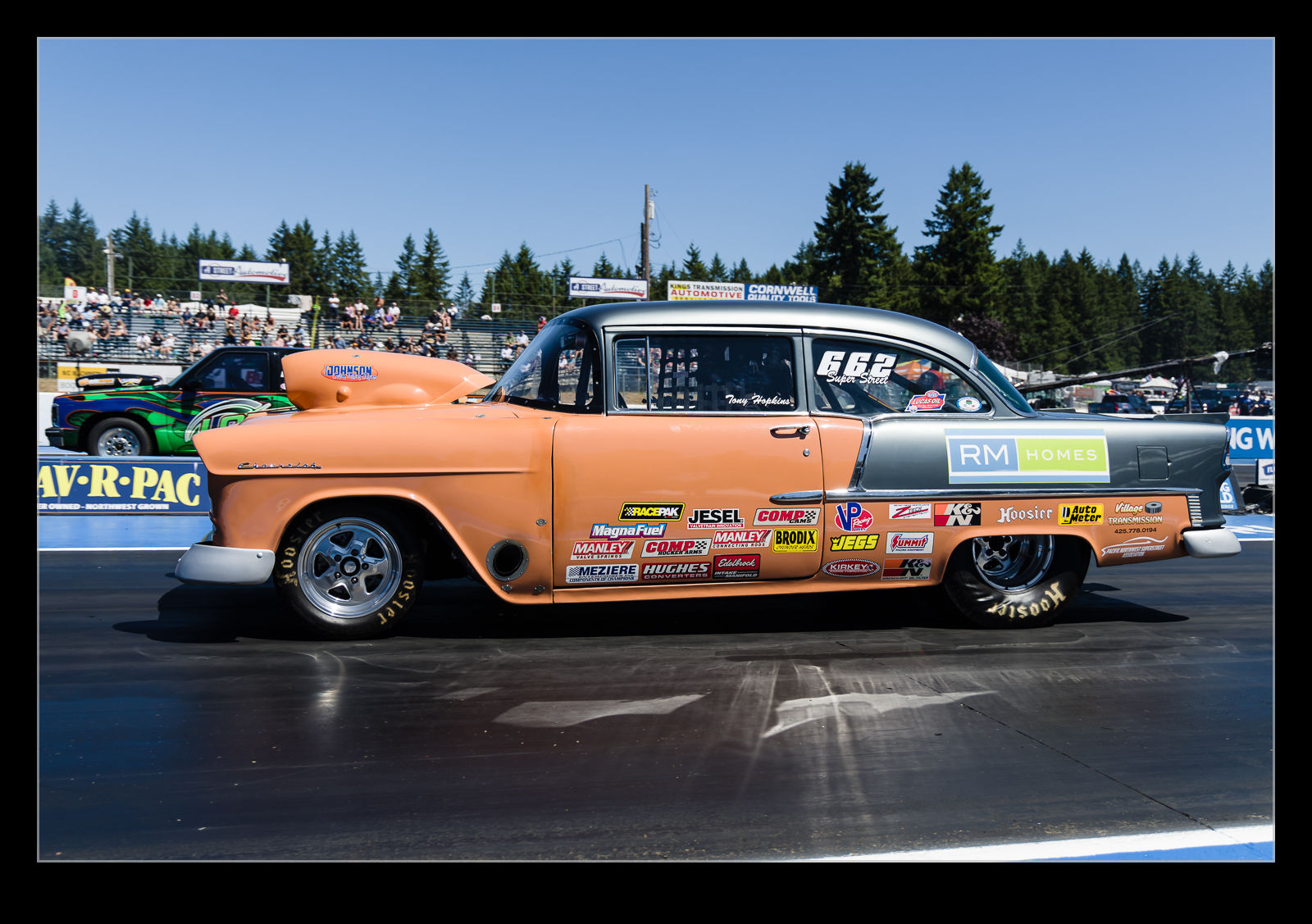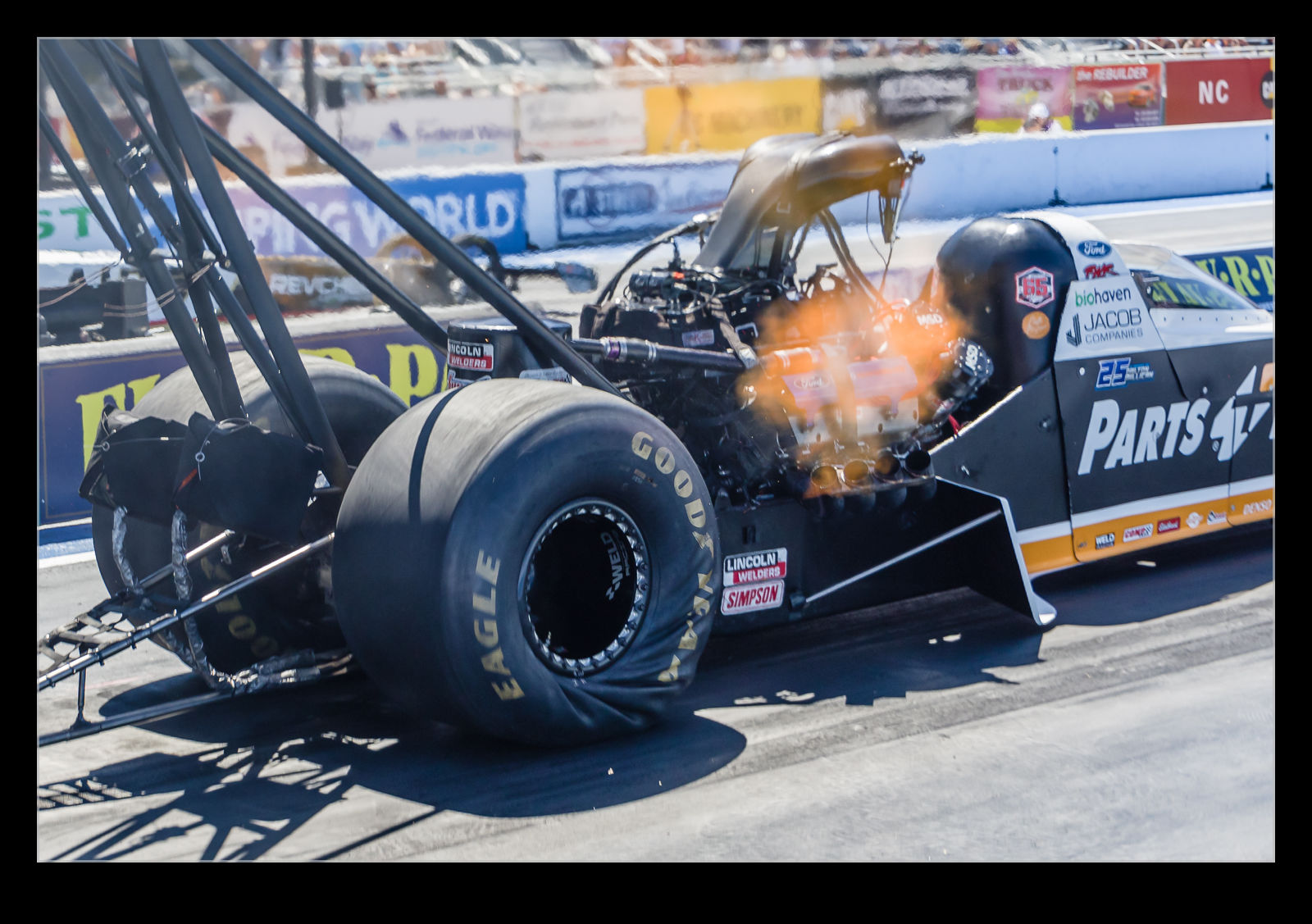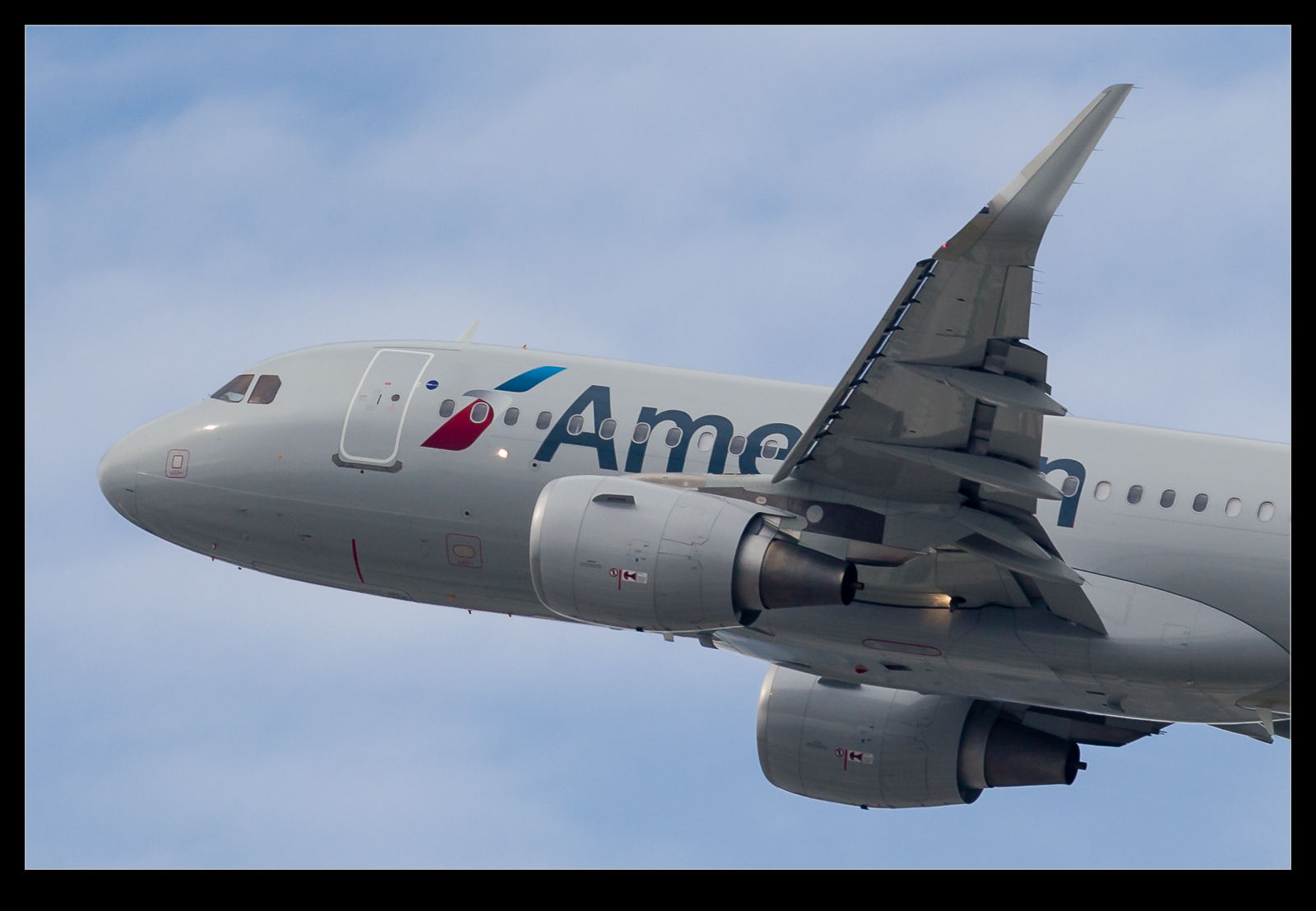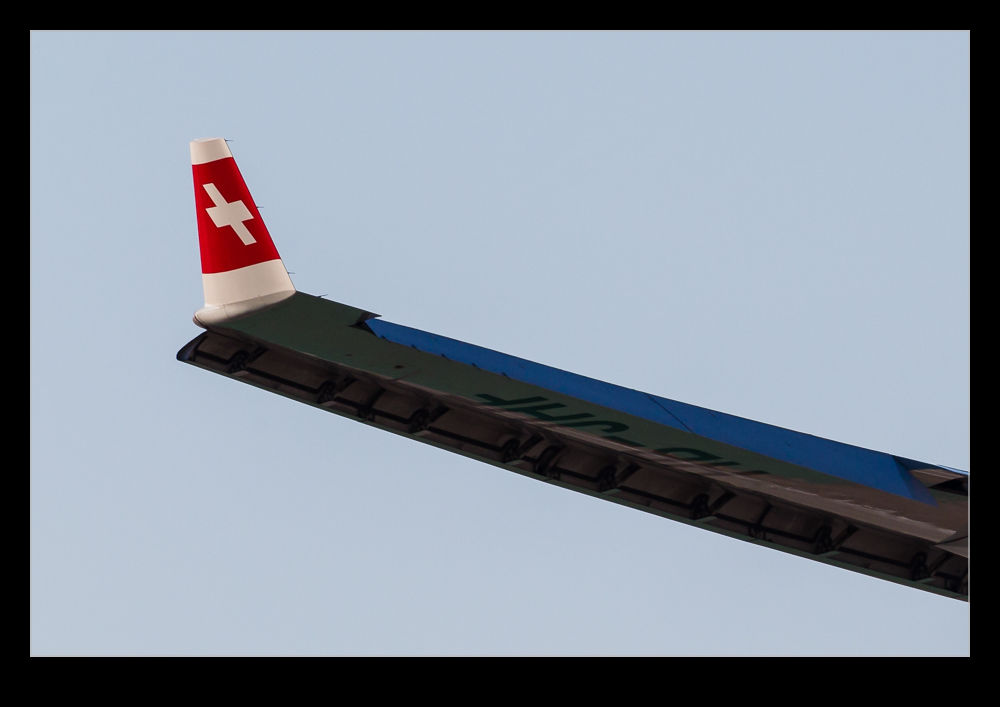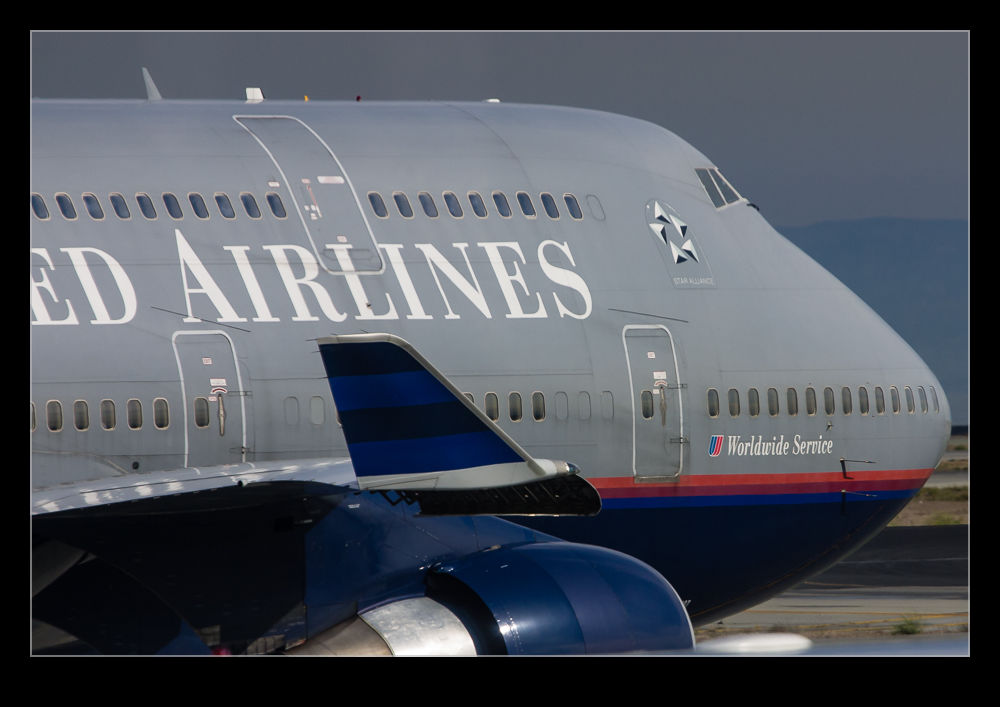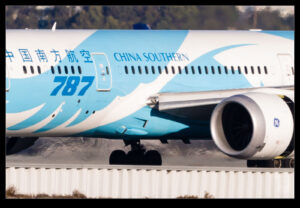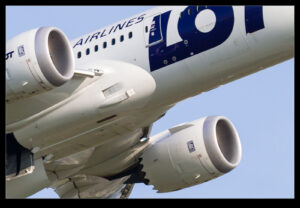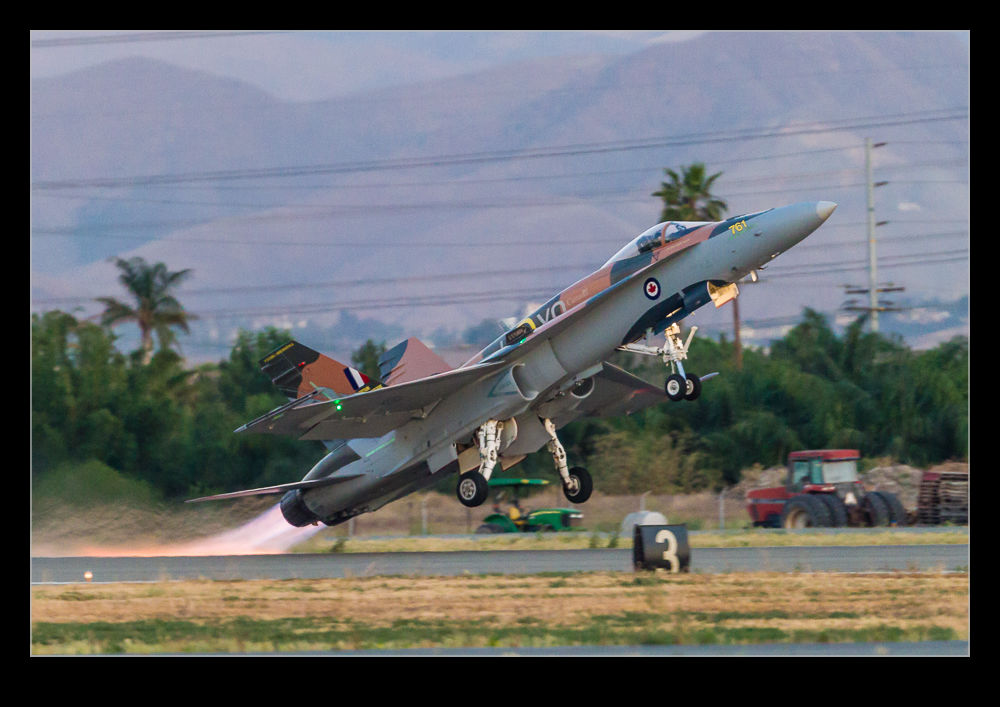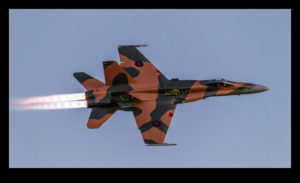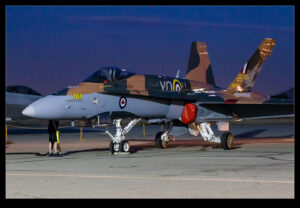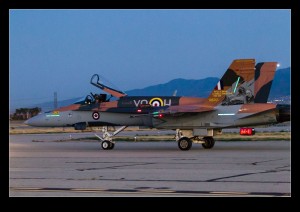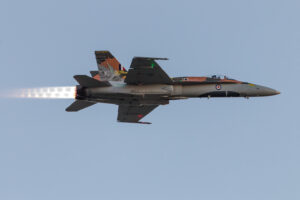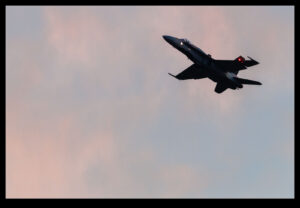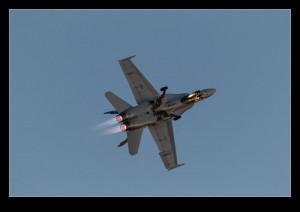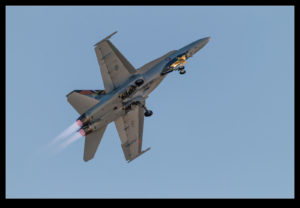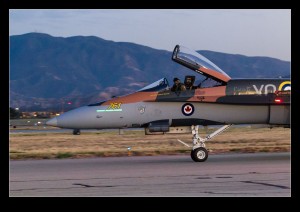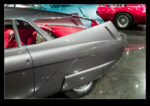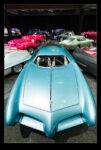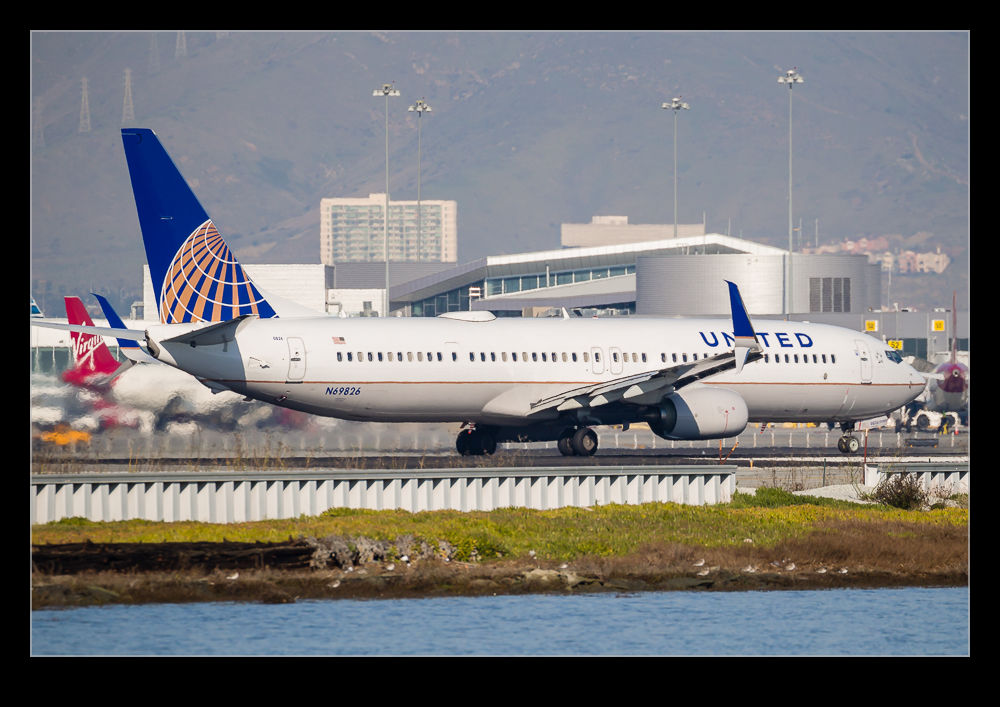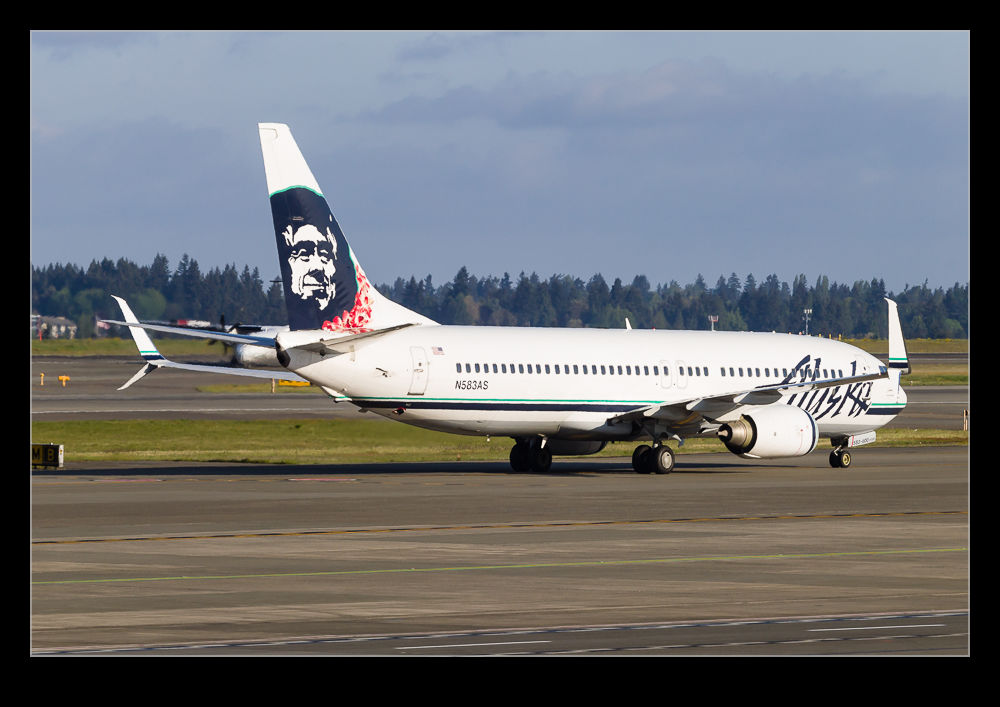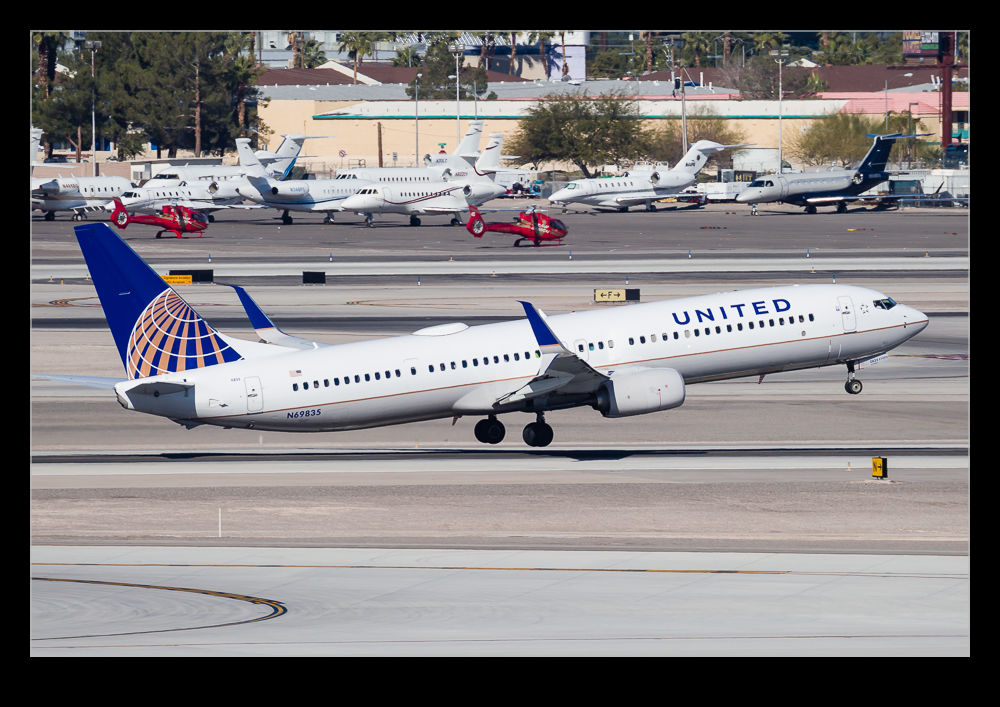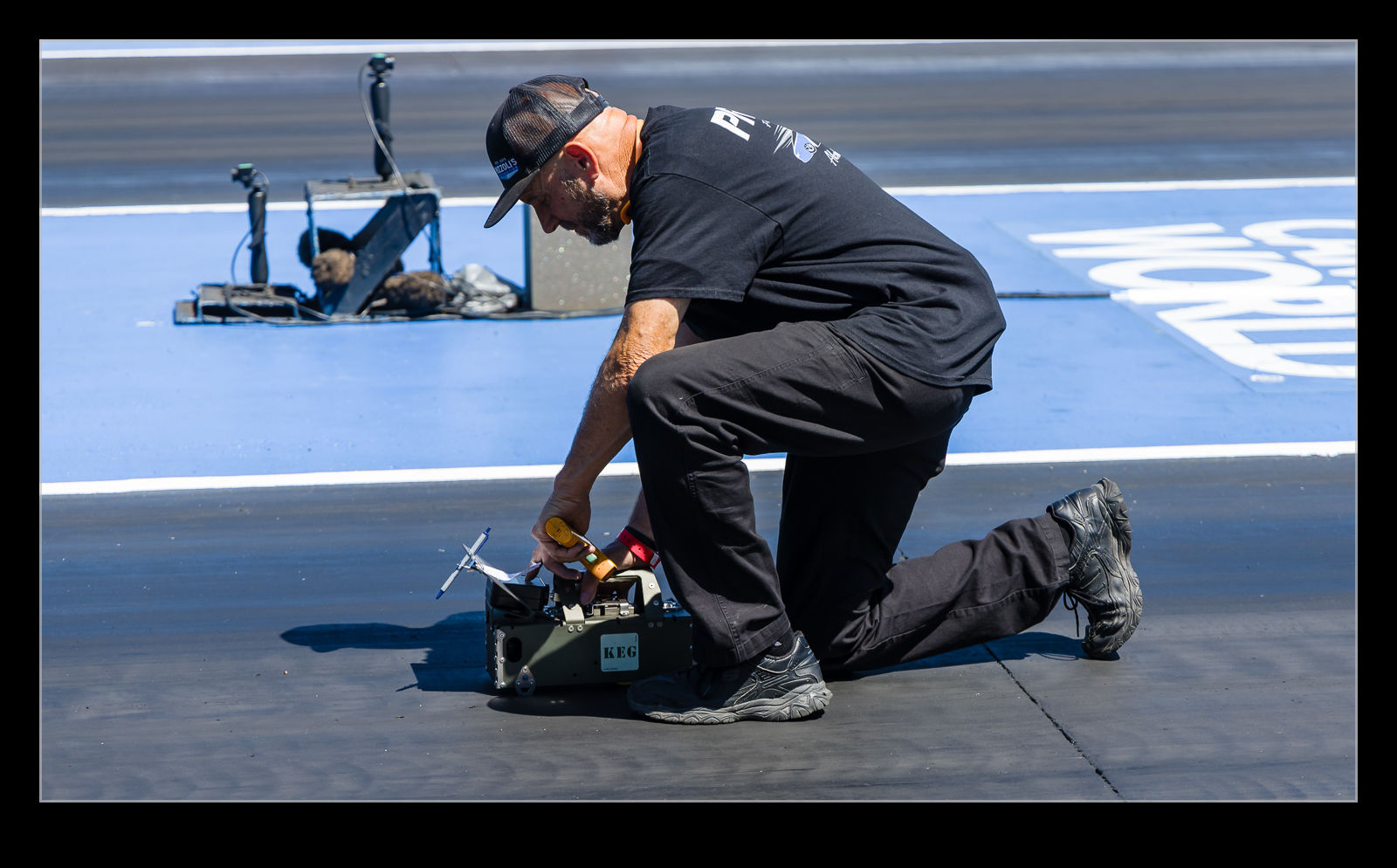 I’ve posted a few times about my experience with the drag racing at Pacific Raceway. One of the things that I particularly was fascinated by was the surface of the strip itself. I mentioned before the machines that they used for conditioning this surface to ensure that there was maximum traction between the tires and ground. Periodically, the staff would come on to the track to take samples and measurements to understand exactly how it was performing. What photos don’t show you, but video can, is just how anything on the surface would stick. Only when you heard people walking along the track could you get the sound of their shoes sticking to the ground. Here is a video to explain what I mean.
I’ve posted a few times about my experience with the drag racing at Pacific Raceway. One of the things that I particularly was fascinated by was the surface of the strip itself. I mentioned before the machines that they used for conditioning this surface to ensure that there was maximum traction between the tires and ground. Periodically, the staff would come on to the track to take samples and measurements to understand exactly how it was performing. What photos don’t show you, but video can, is just how anything on the surface would stick. Only when you heard people walking along the track could you get the sound of their shoes sticking to the ground. Here is a video to explain what I mean.
Tag Archives: drag
Tire Ripples
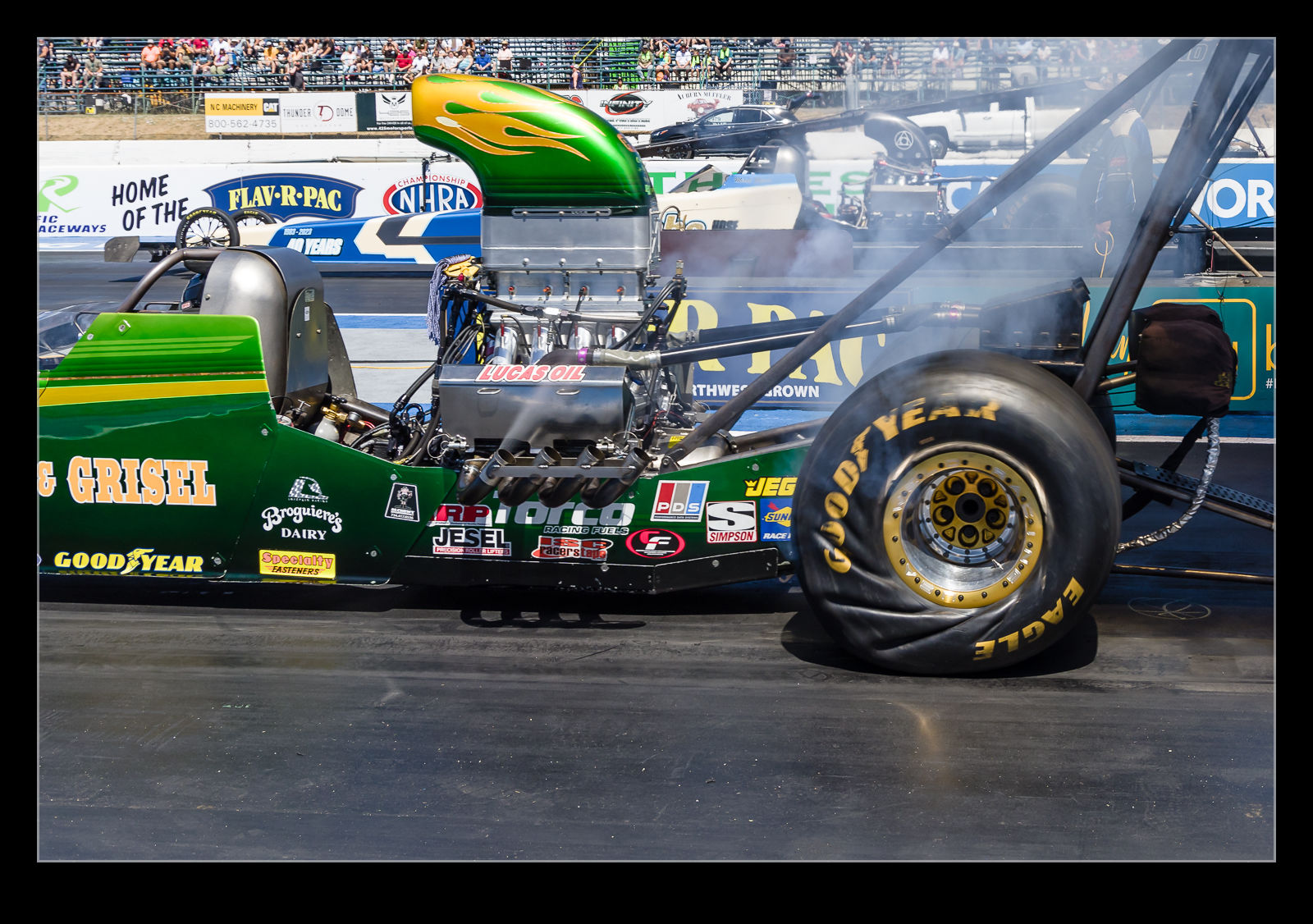 I had seen images from drag racing which showed how the tires get distorted as the immense amounts of torque are transferred through them. A tire is at its most effective when it isn’t sliding but is in static contact with the ground. You might recognize this from your own experience. If you push something across a surface, the resistance reduces once the item starts moving. The same thing happens with tires. To get the best out of them spinning is not good. With the tire gripping the surface but the axle rotating, the sidewall is the area that has to compensate which it does by distorting and then unloading as it drives the vehicle forwards. I wanted to try and catch this so took a bunch of shots focused on trying to catch this moment.
I had seen images from drag racing which showed how the tires get distorted as the immense amounts of torque are transferred through them. A tire is at its most effective when it isn’t sliding but is in static contact with the ground. You might recognize this from your own experience. If you push something across a surface, the resistance reduces once the item starts moving. The same thing happens with tires. To get the best out of them spinning is not good. With the tire gripping the surface but the axle rotating, the sidewall is the area that has to compensate which it does by distorting and then unloading as it drives the vehicle forwards. I wanted to try and catch this so took a bunch of shots focused on trying to catch this moment.
Wingtip Treatments
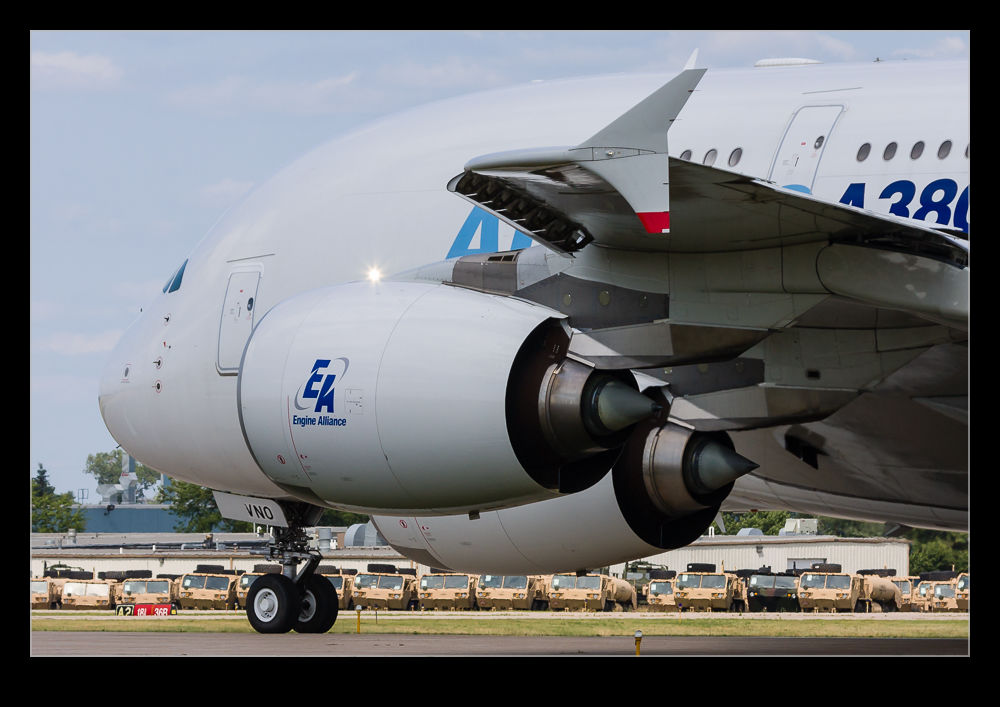 Richard Whitcomb was an aerodynamicist at NASA who pioneered a number of technologies that benefit the aviation world today. One of those was his development of winglets. These are the wingtip treatments that improve lift to drag ratio and climb performance without significantly extending the wing. While his work was clear, it took a while for them to be implemented widely. Now, most aircraft involve some sort of wingtip extension. However, the first aircraft to replicate his design approach was the MD-11.
Richard Whitcomb was an aerodynamicist at NASA who pioneered a number of technologies that benefit the aviation world today. One of those was his development of winglets. These are the wingtip treatments that improve lift to drag ratio and climb performance without significantly extending the wing. While his work was clear, it took a while for them to be implemented widely. Now, most aircraft involve some sort of wingtip extension. However, the first aircraft to replicate his design approach was the MD-11.
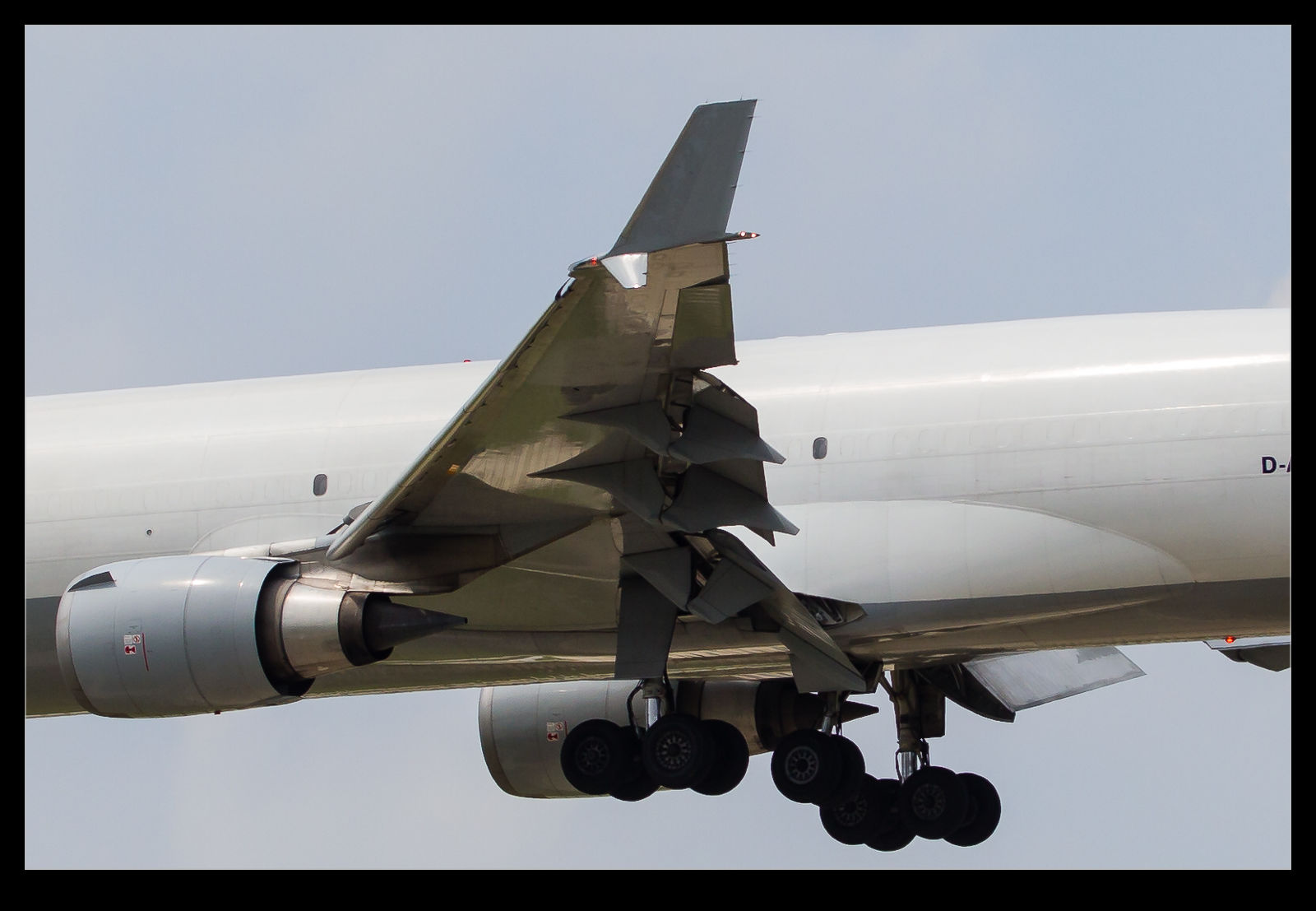 The MD-11 had a split winglet with a larger extension upwards and a smaller one downwards. This reflected some of Whitcomb’s original drawings. Strangely, after this, the focus was on upward winglets only (although the Airbus approach for a while was what they called a fence on the wingtip which was something more in keeping with the Whitcomb approach). Recently, there has been a return to the original with APB introducing the Split Scimitar and Boeing producing their own Split Winglet design (not as elegant as the APB approach in my mind.
The MD-11 had a split winglet with a larger extension upwards and a smaller one downwards. This reflected some of Whitcomb’s original drawings. Strangely, after this, the focus was on upward winglets only (although the Airbus approach for a while was what they called a fence on the wingtip which was something more in keeping with the Whitcomb approach). Recently, there has been a return to the original with APB introducing the Split Scimitar and Boeing producing their own Split Winglet design (not as elegant as the APB approach in my mind.
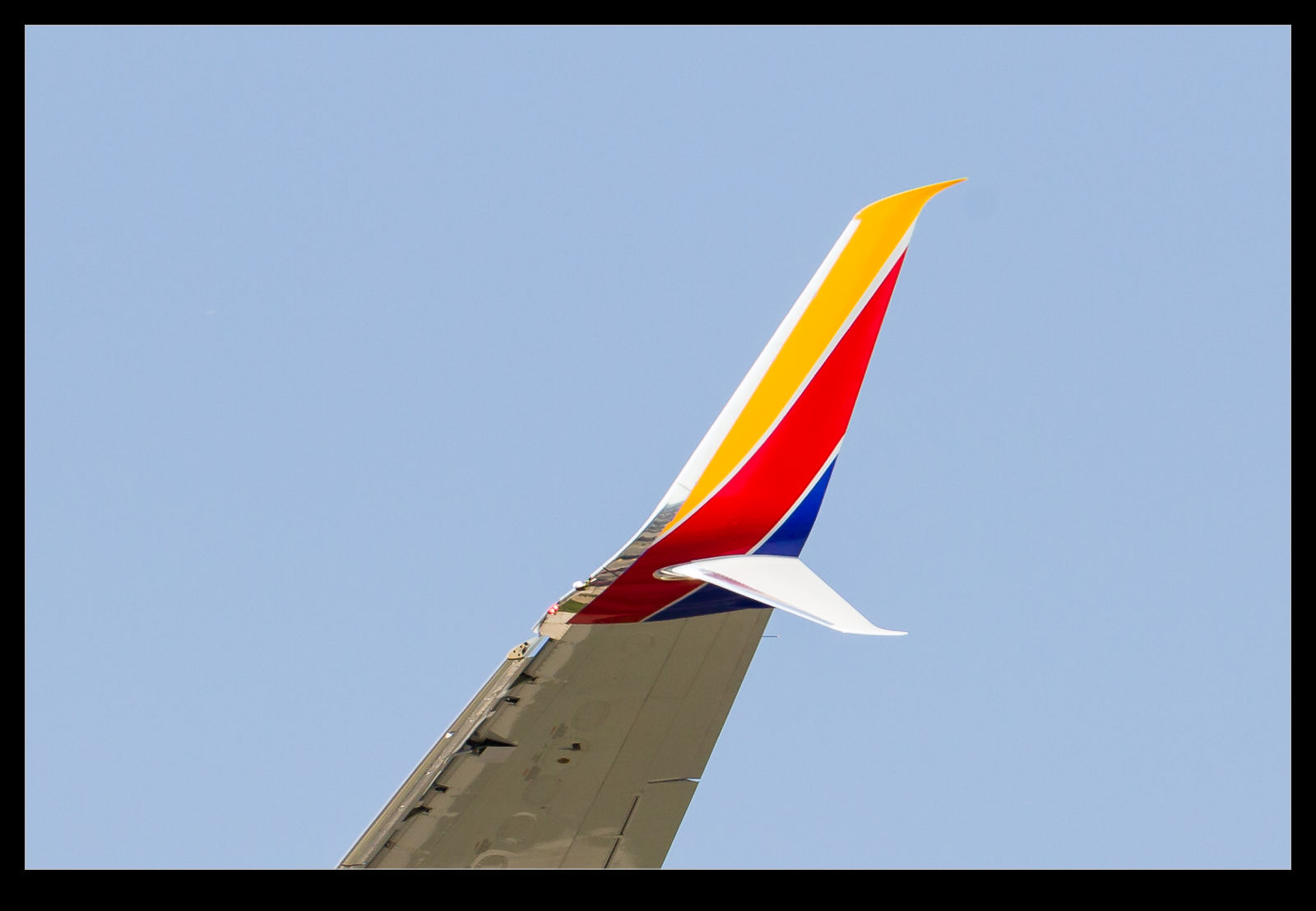 Most airliners and many business jets now incorporate a tweaked wing tip configuration. Maximizing the aerodynamic performance requires squeezing as much as you can out of the design within the space constraints you have. The following pictures are examples of the different types used.
Most airliners and many business jets now incorporate a tweaked wing tip configuration. Maximizing the aerodynamic performance requires squeezing as much as you can out of the design within the space constraints you have. The following pictures are examples of the different types used.
The Less Subtle Bits of Dreamliner Design
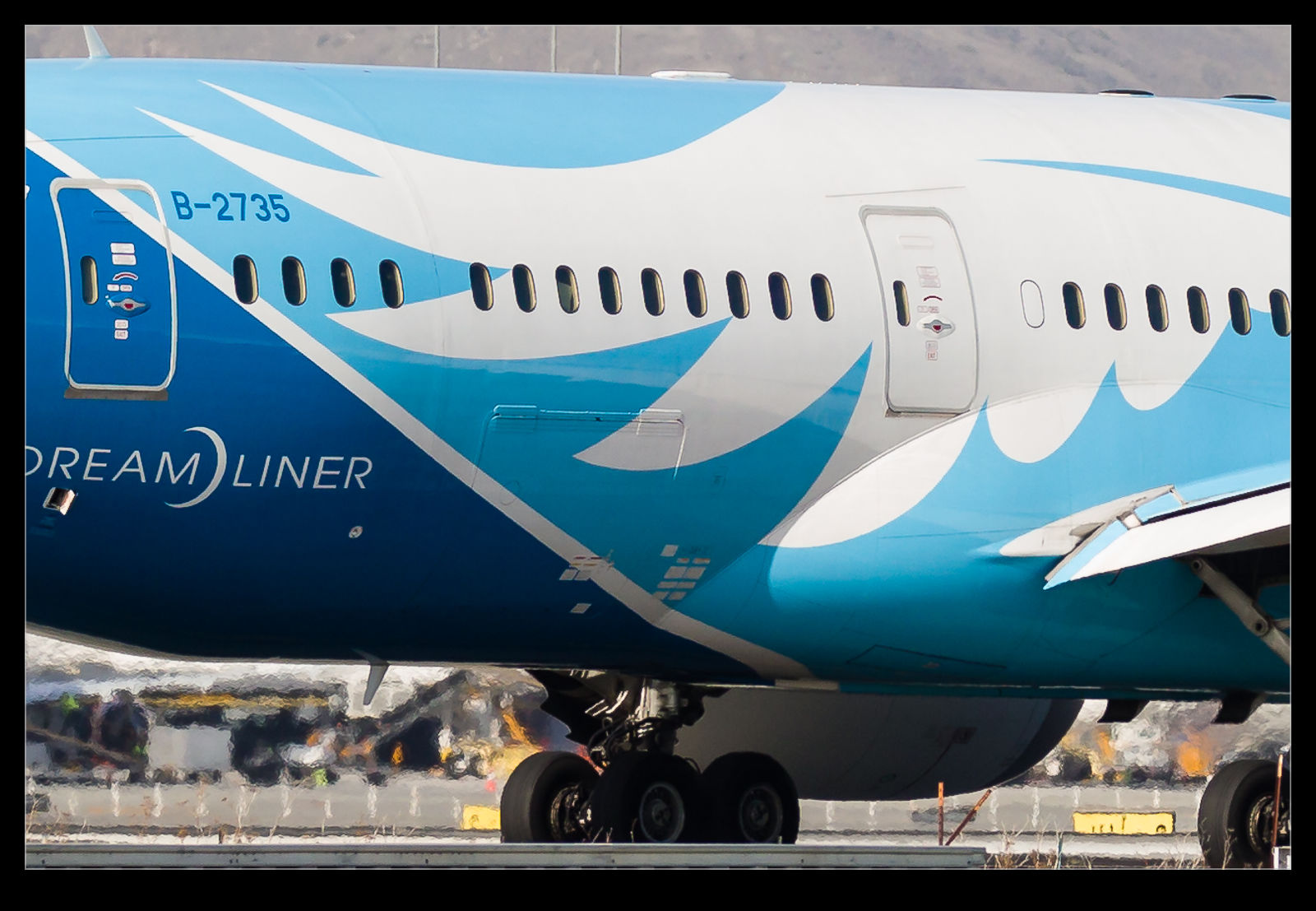 Airliner design is a complex task with many compromises. It is not a surprise that some aspects of the design that results aren’t exactly what you would like. Today I am picking on one particular type – the Boeing 787 Dreamliner. This is almost as new as it gets in the airliner design world so you would expect it to be better than what came before. However, having seen a number of them recently, I have been focused on two areas of the design that are rather disappointing. One is the wing root fairing area and the other is the cargo doors.
Airliner design is a complex task with many compromises. It is not a surprise that some aspects of the design that results aren’t exactly what you would like. Today I am picking on one particular type – the Boeing 787 Dreamliner. This is almost as new as it gets in the airliner design world so you would expect it to be better than what came before. However, having seen a number of them recently, I have been focused on two areas of the design that are rather disappointing. One is the wing root fairing area and the other is the cargo doors.
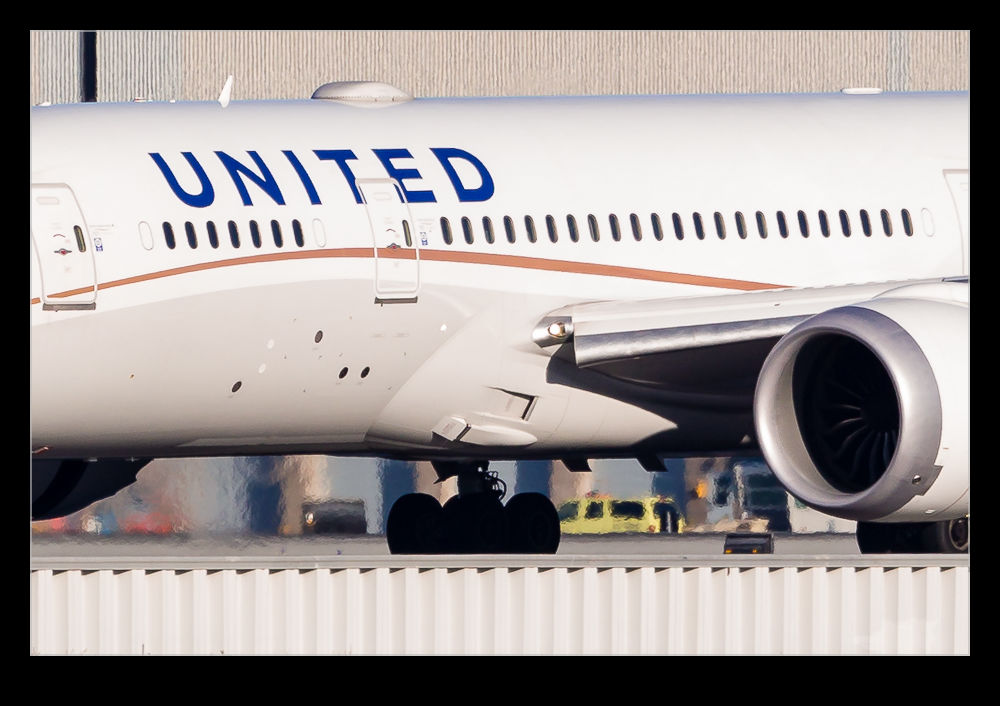 A nice smooth design is what the old aero guy in me likes to see and the inlets and fairings around the transition from the fuselage into the wing root are pretty ugly. They are obviously there as a result of functionality requirements but it does not look good and I imagine it comes with a drag penalty that has had to be accepted.
A nice smooth design is what the old aero guy in me likes to see and the inlets and fairings around the transition from the fuselage into the wing root are pretty ugly. They are obviously there as a result of functionality requirements but it does not look good and I imagine it comes with a drag penalty that has had to be accepted.
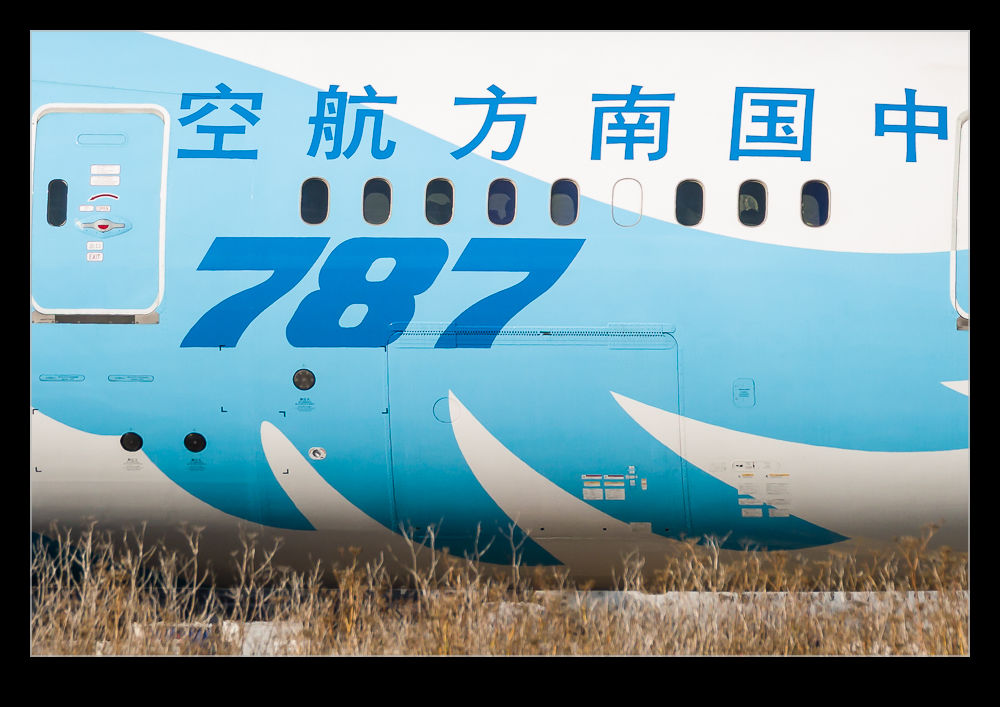 The other area is the cargo doors. I am not sure whether this is a function of the load transfer requirements from composite to metal in the hinges but this area looks rather chunky and draggy. I know from previous projects that the nature of composites versus metals means that you can end up with some large joining fixtures to redistribute the loads but there may be other reasons I haven’t thought about. Given how smooth some metallic fuselage cargo doors are, these jumped out at me. Perhaps I have never looked closely enough at other types. Whatever the fairness of it, I just don’t like what they have done here.
The other area is the cargo doors. I am not sure whether this is a function of the load transfer requirements from composite to metal in the hinges but this area looks rather chunky and draggy. I know from previous projects that the nature of composites versus metals means that you can end up with some large joining fixtures to redistribute the loads but there may be other reasons I haven’t thought about. Given how smooth some metallic fuselage cargo doors are, these jumped out at me. Perhaps I have never looked closely enough at other types. Whatever the fairness of it, I just don’t like what they have done here.
Hornet After Dark
The Canadian Hornet that was at Chino was the last display to fly during the sunset show. (We had a long discussion about whether it is a CF-18 or a CF-188 during the down time but that can be saved for another day.) The aircraft taxied out as the sun was just getting close to setting. We were thinking this would be the perfect combination. Taking off before sunset would allow us to get some shots of it in the low sun when it would look at its best and the, as the sun finally set, we would get the glow of the burners against the darkening sky.
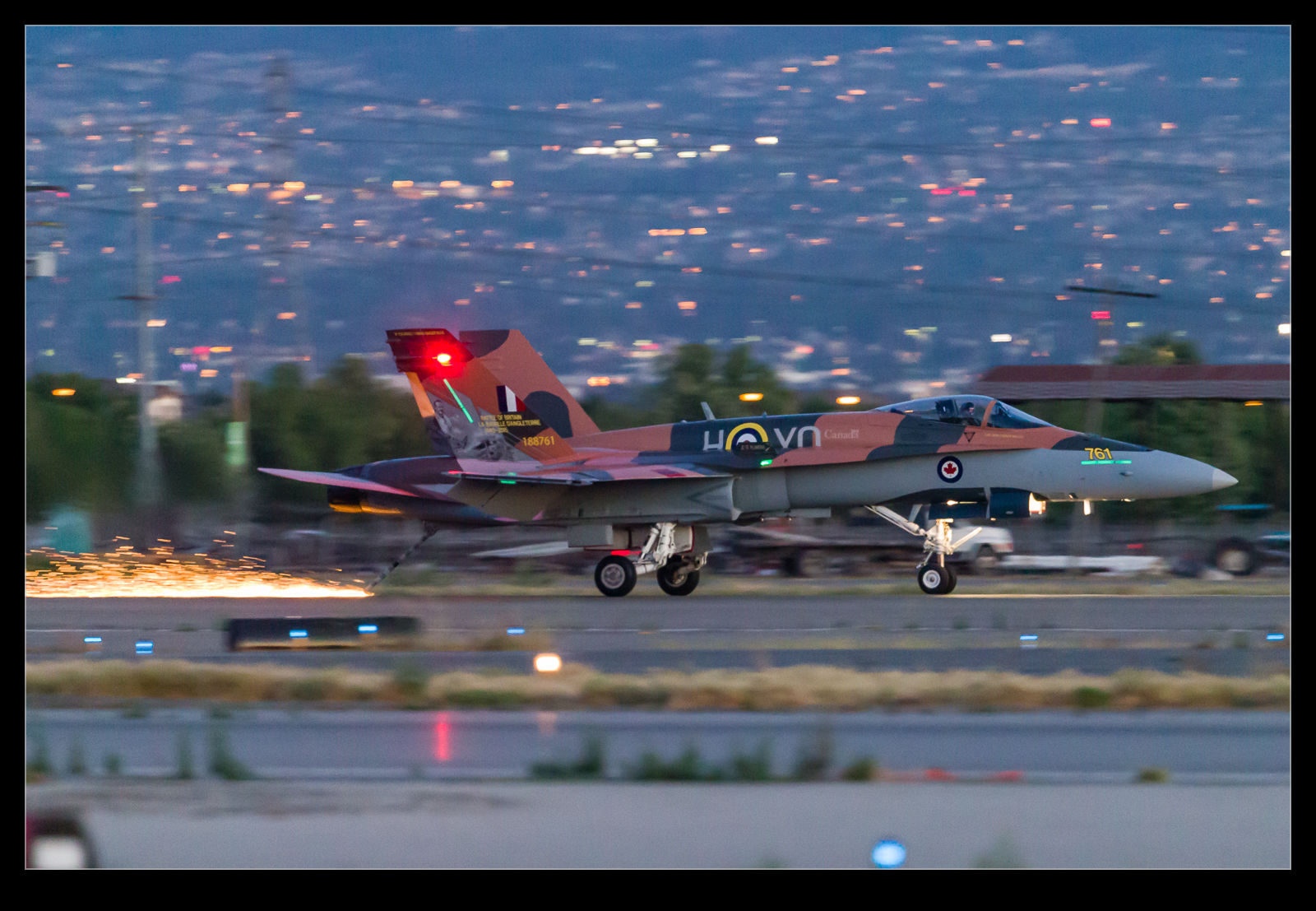 Sadly, they decided to hold their departure until after the sun had already set. I think this was a missed opportunity. It did mean, though, that things were really dark by the end of the display. This was a time that really testing the capabilities of the camera. I was shooting at very high ISO settings in ranges that I would normally avoid. However, getting the shot sharp is better than having a low noise shot that is blurred.
Sadly, they decided to hold their departure until after the sun had already set. I think this was a missed opportunity. It did mean, though, that things were really dark by the end of the display. This was a time that really testing the capabilities of the camera. I was shooting at very high ISO settings in ranges that I would normally avoid. However, getting the shot sharp is better than having a low noise shot that is blurred.
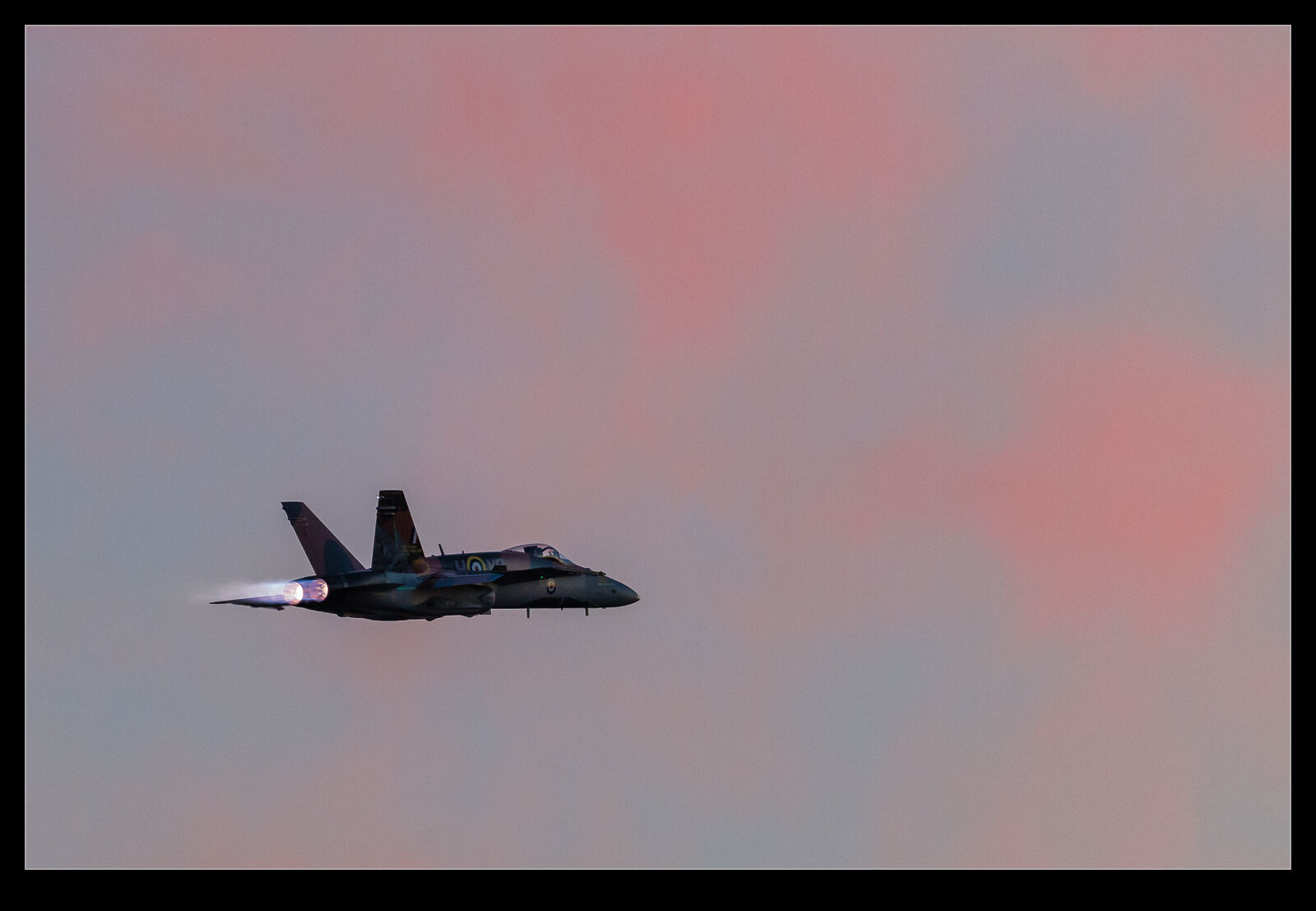 The aircraft pulled off the runway pretty aggressively and the burners really showed up nicely against the runway surface. The display itself was fine but the camouflage of the commemorative scheme was a bit tricky in the conditions. The finale of the display was the landing with the hook lowered. The Hornet touched down and the arrestor hook dragged along the runway surface leaving a bright shower of sparks behind it. The effect was pretty dramatic! I talked to one of the maintenance technicians later about it and asked how many of those they could do. One landing is enough to kill the head of the hook. He did say that they are easy to replace and that he had brought five of them on the trip. A neat way to wrap up the show.
The aircraft pulled off the runway pretty aggressively and the burners really showed up nicely against the runway surface. The display itself was fine but the camouflage of the commemorative scheme was a bit tricky in the conditions. The finale of the display was the landing with the hook lowered. The Hornet touched down and the arrestor hook dragged along the runway surface leaving a bright shower of sparks behind it. The effect was pretty dramatic! I talked to one of the maintenance technicians later about it and asked how many of those they could do. One landing is enough to kill the head of the hook. He did say that they are easy to replace and that he had brought five of them on the trip. A neat way to wrap up the show.
Aerodynamic Specialties
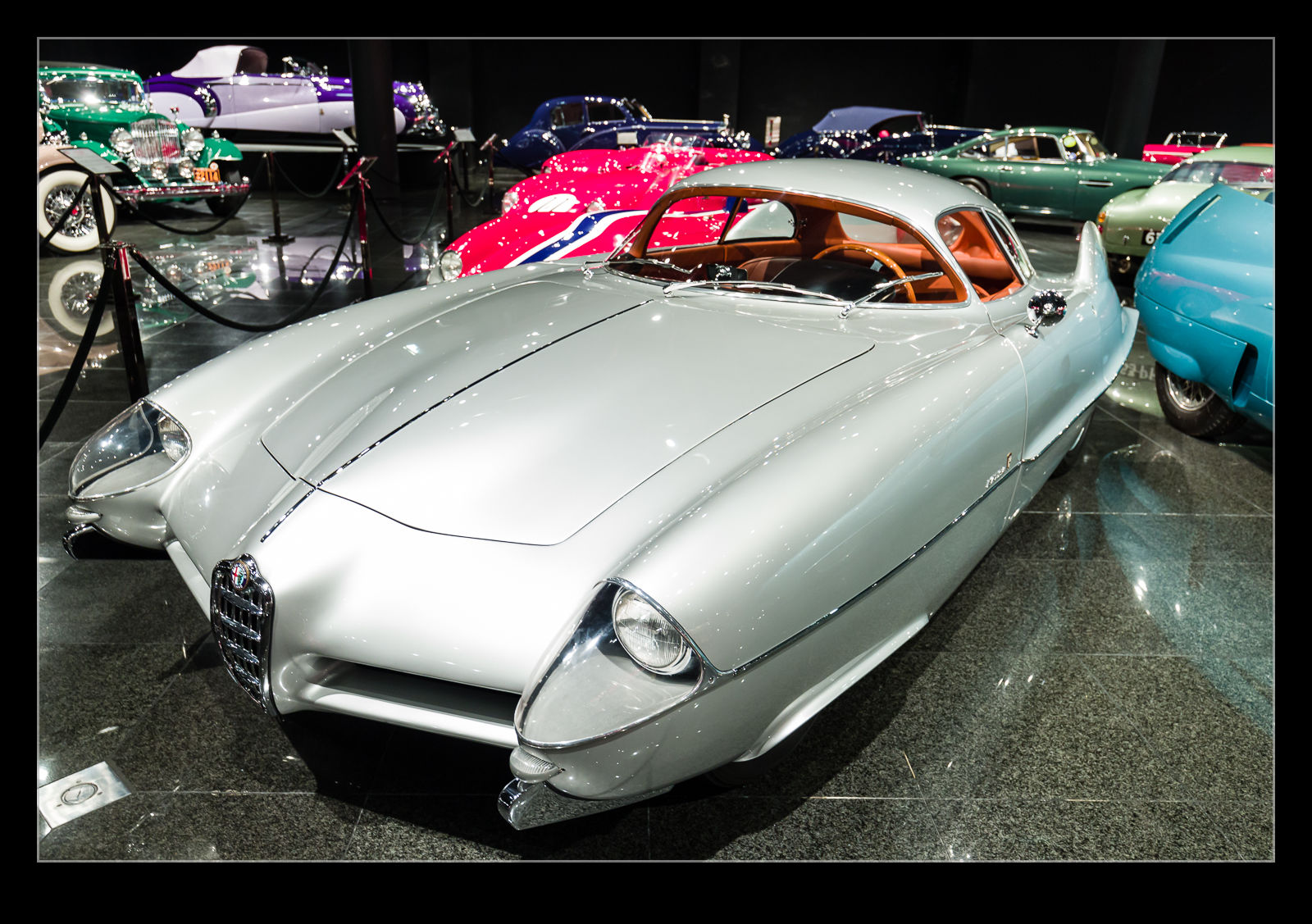 These days you will struggle to come across a car that has not undergone extensive aerodynamic optimization. Even those cars that look like they have deliberately avoided an aerodynamically efficient shape will actually have undergone considerable testing to make sure that they are not just relatively low in drag but that they are also stable at speed. The widespread appreciation of aerodynamic performance became apparent in the 80s with the introduction of various cars that had noticeably lower drag than their competitors and associated improvements in fuel consumption.
These days you will struggle to come across a car that has not undergone extensive aerodynamic optimization. Even those cars that look like they have deliberately avoided an aerodynamically efficient shape will actually have undergone considerable testing to make sure that they are not just relatively low in drag but that they are also stable at speed. The widespread appreciation of aerodynamic performance became apparent in the 80s with the introduction of various cars that had noticeably lower drag than their competitors and associated improvements in fuel consumption.
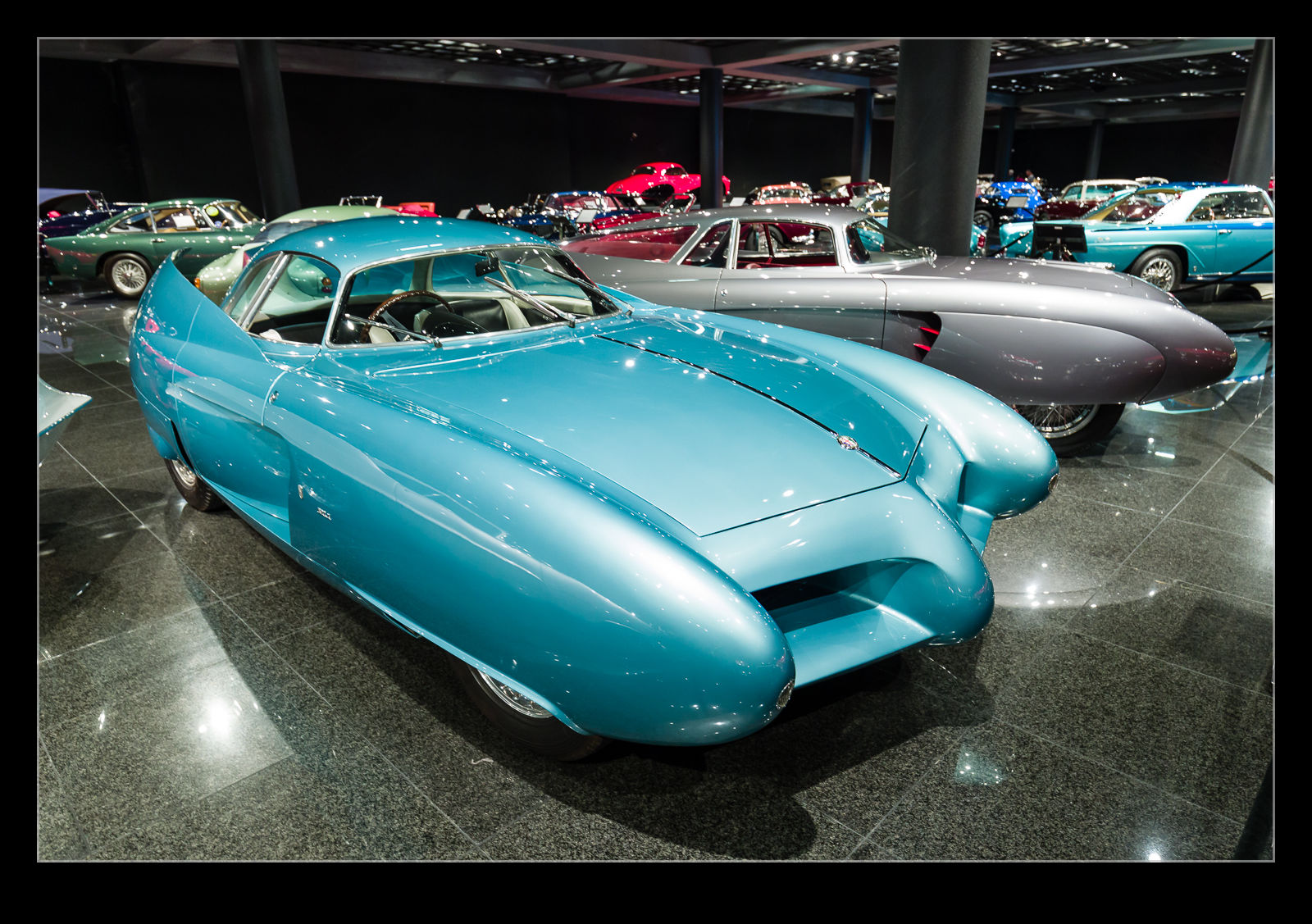 However, the 80s was not the first time that aerodynamics occupied car designers. Go back a long way and you will see some very interesting shapes on cars. Some of these were looking to emulate the space age looks that were popular at the time. Others were real attempts to reduce drag. Blackhawk has a collection of three Alfa Romeo models. These show the iteration of design to try and achieve very low drag. They don’t look anything like a modern car and have more of a Jetsons appearance. However, they are a fascinating look at how some car designers were thinking at the time.
However, the 80s was not the first time that aerodynamics occupied car designers. Go back a long way and you will see some very interesting shapes on cars. Some of these were looking to emulate the space age looks that were popular at the time. Others were real attempts to reduce drag. Blackhawk has a collection of three Alfa Romeo models. These show the iteration of design to try and achieve very low drag. They don’t look anything like a modern car and have more of a Jetsons appearance. However, they are a fascinating look at how some car designers were thinking at the time.
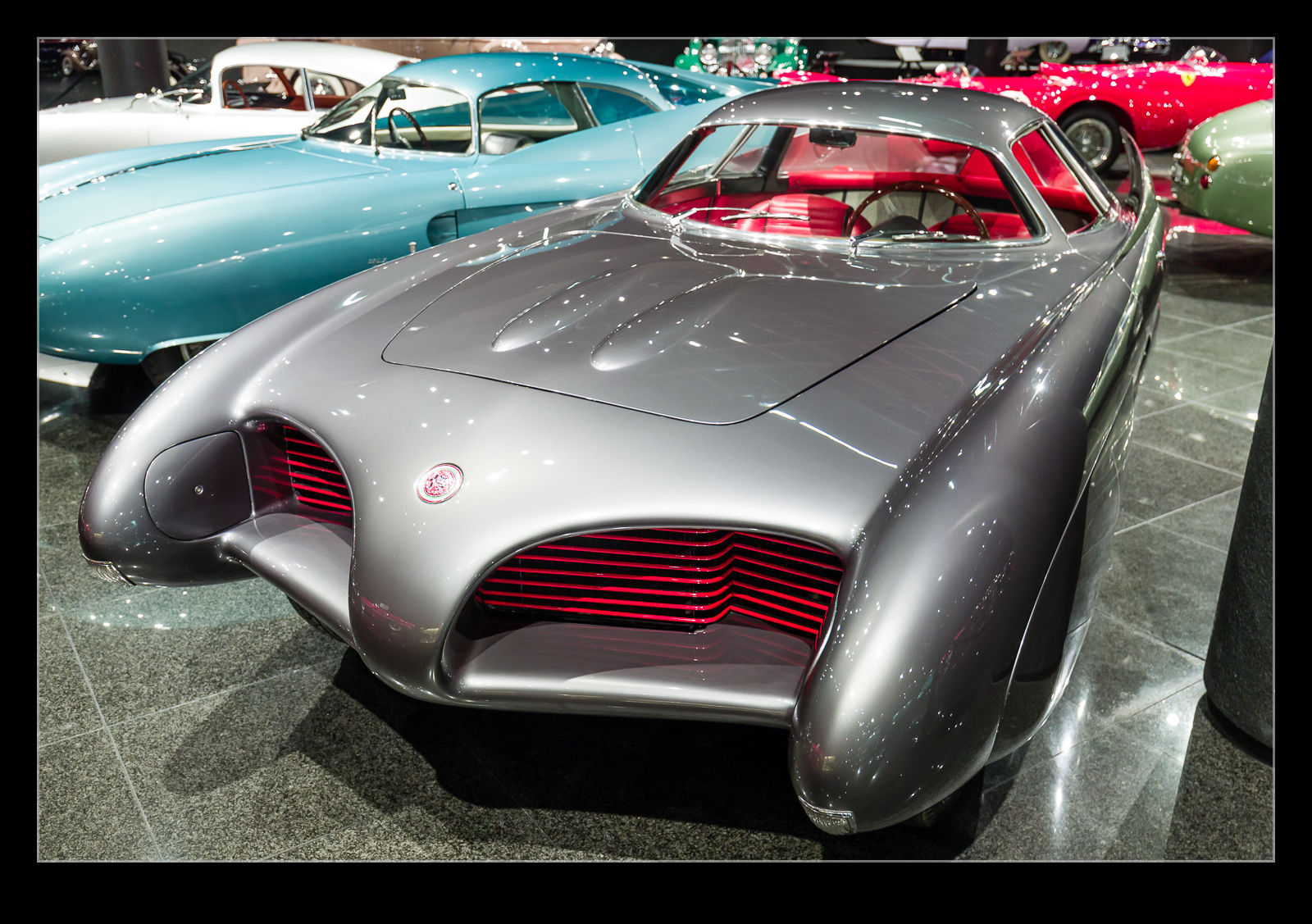 Obviously modern cars don’t resemble these machines which suggests their approach was not the best way to go. They also look like they would have been expensive to manufacture. What they do show is the willingness to push the envelope. It is great that they are still around for us to check out and see what was seen as cutting edge at the time.
Obviously modern cars don’t resemble these machines which suggests their approach was not the best way to go. They also look like they would have been expensive to manufacture. What they do show is the willingness to push the envelope. It is great that they are still around for us to check out and see what was seen as cutting edge at the time.
Scimitar Tips
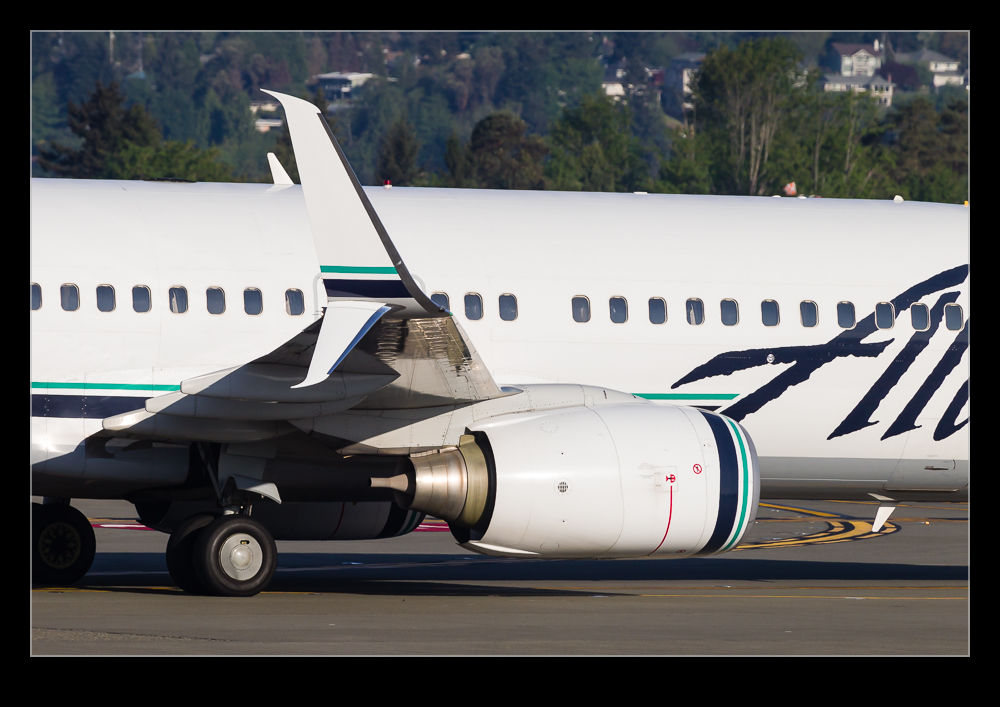 Aviation Partners Boeing has been very effective over the years in getting their technology into mainline airline service. The winglets they developed for the Boeing 737 have been very widely adopted with installations on 300 Series, 700 Series, 800 Series and 900 Series jets around the world. The BBJs have also had them extensively. I don’t think any new 737s are delivered without them. The programs for the 757 and 767 have also been well adopted.
Aviation Partners Boeing has been very effective over the years in getting their technology into mainline airline service. The winglets they developed for the Boeing 737 have been very widely adopted with installations on 300 Series, 700 Series, 800 Series and 900 Series jets around the world. The BBJs have also had them extensively. I don’t think any new 737s are delivered without them. The programs for the 757 and 767 have also been well adopted.
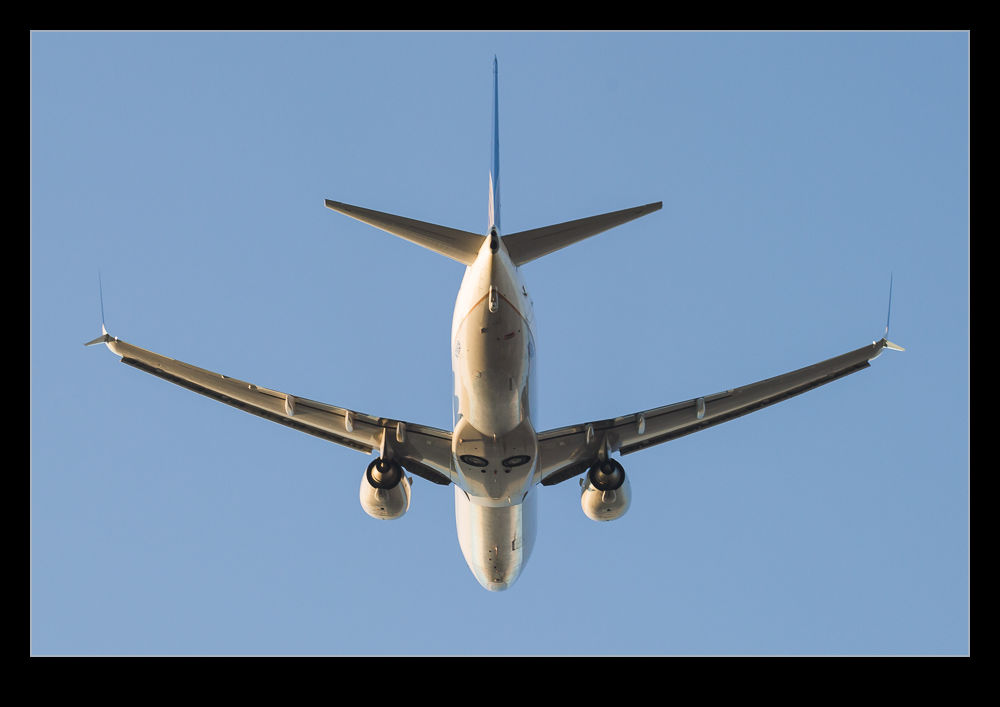 The 737 Max is going to have a new winglet design that Boeing have created. However, it is a way from flying. Meanwhile, APB has not stood still and they have created a new winglet design that has a downward portion mated to an updated winglet under the name scimitar. This is now making an appearance on a lot of jets as a retrofit. Southwest, United and Alaska have all started rolling the installation out.
The 737 Max is going to have a new winglet design that Boeing have created. However, it is a way from flying. Meanwhile, APB has not stood still and they have created a new winglet design that has a downward portion mated to an updated winglet under the name scimitar. This is now making an appearance on a lot of jets as a retrofit. Southwest, United and Alaska have all started rolling the installation out.
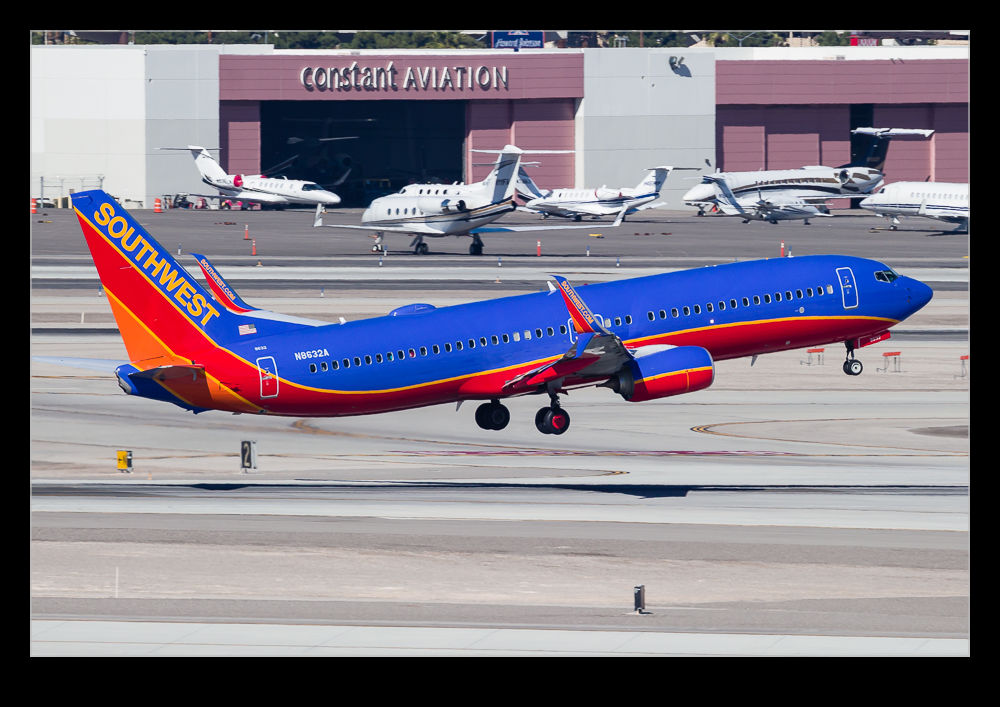 I like the look of the new design. The tip seems to be a bit of a styling effort. The downward facing portion is well aligned to avoid creating a drag inducing choke area at the root. The configuration is actually quite reminiscent of the original winglet designs in the paper Richard Whitcomb wrote when first proposing the concept. I suspect we shall be seeing a lot more of them in the future.
I like the look of the new design. The tip seems to be a bit of a styling effort. The downward facing portion is well aligned to avoid creating a drag inducing choke area at the root. The configuration is actually quite reminiscent of the original winglet designs in the paper Richard Whitcomb wrote when first proposing the concept. I suspect we shall be seeing a lot more of them in the future.
Night flight
 A recent flight home meant an arrival into Midway a while after the sun had set. I had been taking some pictures out of the window as we headed back across the country and decided to try my luck after dark. I had thought about trying out some auto ISO shots as I described in a previous post. However, since I was shooting night scenes, the camera does its best to try and make things look properly exposed and this is not what you need. Instead, I had to manually set the ISO to a higher number and then drop the exposure compensation to between -2 and -3.
A recent flight home meant an arrival into Midway a while after the sun had set. I had been taking some pictures out of the window as we headed back across the country and decided to try my luck after dark. I had thought about trying out some auto ISO shots as I described in a previous post. However, since I was shooting night scenes, the camera does its best to try and make things look properly exposed and this is not what you need. Instead, I had to manually set the ISO to a higher number and then drop the exposure compensation to between -2 and -3.
 The shots came out okay but they weren’t terribly interesting. However, as we got lower, I decided to go for something a bit more interesting and slowed the shutter speed down dramatically. I braced the camera against the window frame and decided to see what sort of light trails I could get. The exposures were a couple of seconds or more so this is rather tricky. While the background is blurred deliberately, I had the top of the engine and the winglet in for reference. Avoiding blurring them was more hit and miss.
The shots came out okay but they weren’t terribly interesting. However, as we got lower, I decided to go for something a bit more interesting and slowed the shutter speed down dramatically. I braced the camera against the window frame and decided to see what sort of light trails I could get. The exposures were a couple of seconds or more so this is rather tricky. While the background is blurred deliberately, I had the top of the engine and the winglet in for reference. Avoiding blurring them was more hit and miss.
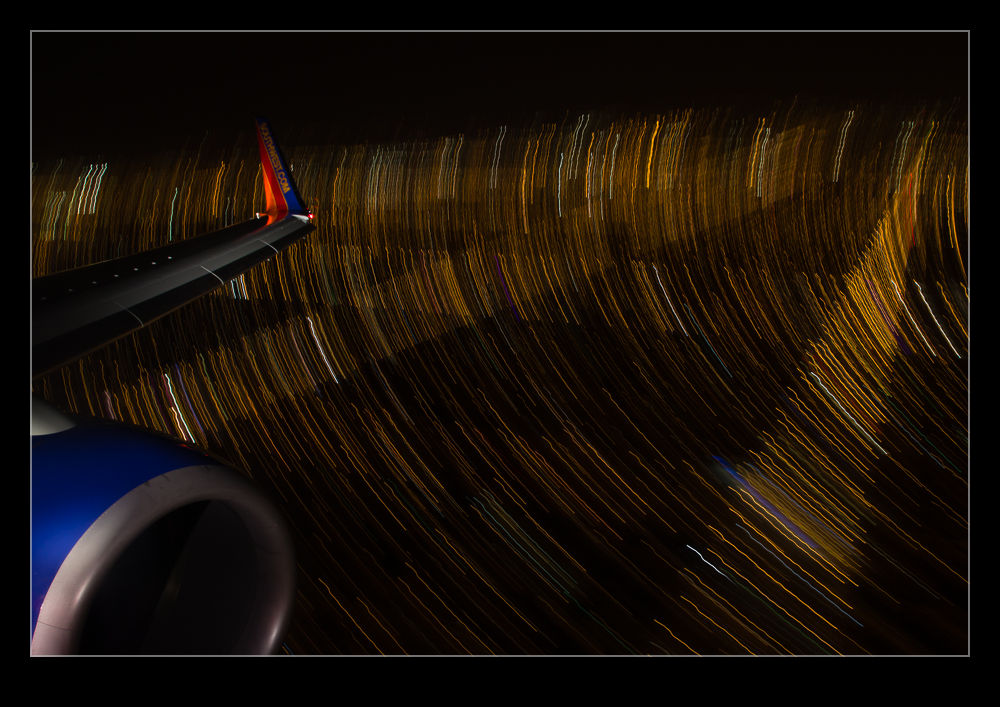 I tried a bunch of shots and was pleased with the number that came out well. However, the effect only seems to work in a couple of situations. One is a turn. This puts more ground lights in the frame and turns everything into a nice curve. The other is when you are very low at which point everything is moving past you close and fast. I might try this again before too long but will have to ponder what might improve things. One technique issue I was pleased with was remembering to turn off image stabilization. With long exposures, it causes the image to wander so, when bracing, it actually makes things worse. Unlike me to remember that first time out but sometimes I do get lucky!
I tried a bunch of shots and was pleased with the number that came out well. However, the effect only seems to work in a couple of situations. One is a turn. This puts more ground lights in the frame and turns everything into a nice curve. The other is when you are very low at which point everything is moving past you close and fast. I might try this again before too long but will have to ponder what might improve things. One technique issue I was pleased with was remembering to turn off image stabilization. With long exposures, it causes the image to wander so, when bracing, it actually makes things worse. Unlike me to remember that first time out but sometimes I do get lucky!
